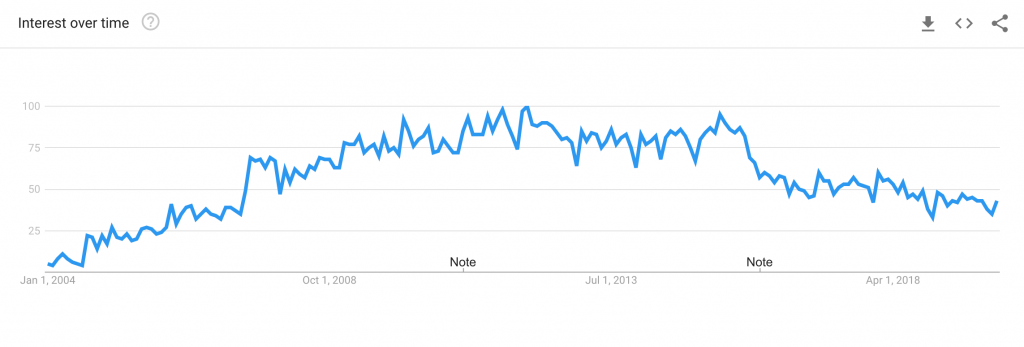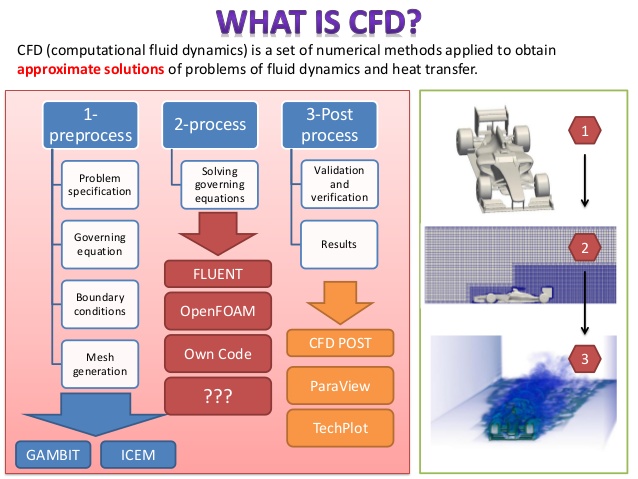Contents:

It is the most common or most probable value observed in a set of observations or sample. Missing data – It is the problem of data being absent for one or more variables in one’s study. Missing at random – It is said of missing data when the probability of being missing on a variable is unrelated to the value of that variable had it been observed. Median – The median is the middle most number in an ordered series of numbers.

- Eigenvalue actually reflects the number of extracted factors whose sum should be equal to the number of items that are subjected to factor analysis.
- Estimates obtained using this method are called maximum likelihood estimates.
- Above, the growth factor for each period is nothing but 1 + annual return.
- One of the major advantages of variance is that regardless of the direction of data points, the variance will always treat deviations from the mean like the same.
In other words, returns of funds with a high standard deviation may fluctuate either on the higher or lower side of the average and may be said to lack consistency. As you can see, the 1st mutual fund is more in line with the category and index performance, while the second has a higher standard deviation, implying higher volatility. Again, it is not to say that Nippon India Large Cap’s standard deviation is not favorable.
Standard Deviation
We are a team of dedicated analysts that have competent experience in data modelling, statistical tests, hypothesis testing, predictive analysis and interpretation. There is no significant answer to the question “How many cases respondents do I need to factor analysis? A common rule is to suggest that a researcher has at least participants per variable.
It estimates how much a set of investments may lose , given normal market conditions, in a set time interval similar to a day. The sample variance, on average, is equal to the population variance. There can be two types of variance – sample variance and population variance. By the definition of standard deviation, it is a measure of volatility, Sharpe Ratio measures risk-adjusted performance or how well a fund performs compared to its volatility. Alpha indicates how much value has been either added or subtracted by the fund manager’s investment call, and Beta, on the other hand, marks how sensitive a fund can be to market movement. We would conclude that absenteeism from school affects student test scores, which makes theoretical sense.
- The Sample Variance Formula is defined as the sum of the squared differences between each data point and the mean, divided by the total number of data points minus one.
- It can be used with two or more groups and uses the F-test statistic.
- It is used to examine the significance of the association between two kinds of classifications.
- Seasonal differencing – It is creating a transformed series by subtracting observations which are separated in time by one seasonal cycle.
Ordinary least squares – It is a means of estimating coefficients in linear regression and ANOVA models which depends on finding the estimates which minimize the sum of squared prediction errors. Philosophically, a one-sided test represents the analyst’s a priori belief that a certain population parameter is either negative or positive. Discrete variable – A set of data is discrete if the values belonging to it are distinct, i.e., they can be counted.
Computing Historical Volatility in Excel
In statistical models, multi-collinearity causes problems with the efficiency of parameter estimates. It also raises some philosophical issues, since it becomes difficult to determine which variables , are causal and which are the result of illusory correlation. Assumptions – Statistical inference normally involves using a sample to estimate the parameters of a model.

Intuitively we can think of the variance as a numerical value that is used to evaluate the variability of data about the mean. This implies that the variance shows how far each individual data point is from the average as well as from each other. When we want to find the dispersion of the data points relative to the mean we use the standard deviation. In other words, when we want to see how the observations in a data set differ from the mean, standard deviation is used. Σ2 is the symbol to denote variance and σ represents the standard deviation.
Autoregressive integrated moving average – This statistic is a Box-Jenkins approach to time series analysis. It tests for changes in the data patterns pre-intervention and post-intervention within the context of analyzing the outcomes of a time series design. Aggregate – It is the value of a single variable which summarizes, adds, or represents the mean of a group or collection of data.
Standard Deviation – Data Science Certification Program Example
But as the presence of more than 0.5 (or 0.6) loading in more than one component https://1investing.in/ that this variable represents two components, thus, it is not effective in measuring a specific category. As in Table 7 experience with the product, and quality of the product measures more than one component, thus, they can’t be considered for further analysis. Hence, further processing i.e. impact analysis or any other statistical analysis includes all variables except experience with the product, and quality of the product . Sample variance can be defined as the expectation of the squared difference of data points from the mean of the data set.
So, the 5th decile is the median and the second decile is the 20th percentile. Causal effect – It is the difference between the study endpoint’s value if a subject experiences the treatment condition vs. its value if the same subject is to experience the control condition instead. This is a counter-factual definition since it is impossible to observe. Block diagram – It consists of vertically placed rectangles on a common base line, normally the height of the rectangles being proportional to a quantitative variable. Beginning of observation – In survival analysis, it is the moment in time when subjects begin to be followed by the person carrying the studies. Bar chart – It is a diagram for showing the frequencies of a variable which is categorical or discrete.
Sample variance formula – FAQs
Then, subtract the imply from each knowledge level, and square the differences. Finally, divide the sum by n minus 1, the place n equals the entire number of knowledge points in your pattern. The VAR.S operate goals to calculate the variance of a selected sample of knowledge. The square root of the sample variance will result in the standard deviation. The unit of measurement of the sample variance will be different as compared to the data while the unit of the sample standard deviation will be the same.
Longitudinal metabolomics of increasing body-mass index and waist … – Nature.com
Longitudinal metabolomics of increasing body-mass index and waist ….
Posted: Thu, 23 Feb 2023 15:38:10 GMT [source]
To use a sample variance calculator, you simply input the individual observations and the sample size, and the calculator will give you the sample variance. Some calculators also allow you to input the mean and standard deviation, and will calculate the sample variance based on those values. When using a sample variance calculator, it is important to make sure that you are using the correct formula for the type of data you are analyzing. The Sample Variance Formula is used to calculate the variance of a set of data points. The Sample Variance Formula is defined as the sum of the squared differences between each data point and the mean, divided by the total number of data points minus one.
In general, investigations and analyses of statistics fall into two broad categories called descriptive and inferential statistics. Descriptive statistics deals with the processing of data without attempting to draw any inferences from it. It involves the tabulating, depicting, and describing of the collections of data. The data provide a picture or description of the properties of data collected in order to summarize them into manageable form.

It is an absolute measure of dispersion and is used to check the deviation of data points with respect to the data’s average. Value is computed based on the values of the intercept and regression weight. An example will illustrate the logic behind the linear regression equation. Of the observations, the least squares estimation of the regression weight yields the smallest sampling variance or errors of prediction.
The most popular multi-how to interpret variance technique, Cox regression, is a model for the log of the hazard of the event. Sampling error – It is that part of the difference between a population value and an estimate thereof, derived from a random sample, which is due to the fact that only a sample of values is observed. Reverse causation – It is the situation in which the study end point in a regression model is actually the cause of one of the explanatory variables in the model, rather than the other way around. Ratio scale – A variable measured on a ratio scale has order, possesses even intervals between levels of the variable, and has an absolute zero. An example of a ratio scale variable is height, where levels of response include 0.000 and 5,000 centimetres.

When these ‘lumpy’ data are smoothed appropriately, the data are thought to better reflect the true process which generated the data. An example is the speed-time trace of a vehicle, where speed is measured in integer kilometres per hour. Accelerations of the vehicle computed from differences in successive speeds are over-estimated because of the lumpy nature of measuring speed. Hence, an appropriate smoothing process on the speed data results in data which more closely resembles the underlying data generating process.
Standard remedies include transformations of the response, and / or employing a generalized linear model. And the variance calculated from a sample known as sample variance. Variance is the measure of variability of a data set that indicates how far different values are spread.
Examples are the number of children in a family, the number of rainy days in the month, or the length of the longest dry spell in the growing season. A discrete variable is measured on the nominal or ordinal scale, and can assume a finite number of values within an interval or range. Discrete variables are less informative than are continuous variables. Cluster sampling – It is a type of sampling whereby observations are selected at random from several clusters instead of at random from the entire population. It is intended that the heterogeneity in the phenomenon of interest is reflected within the clusters, i.e., members in the clusters are not homogenous with respect to the response variable.
Leave a Reply